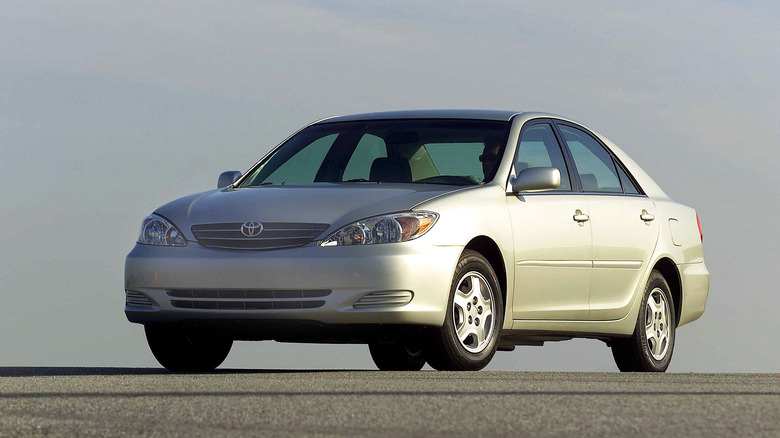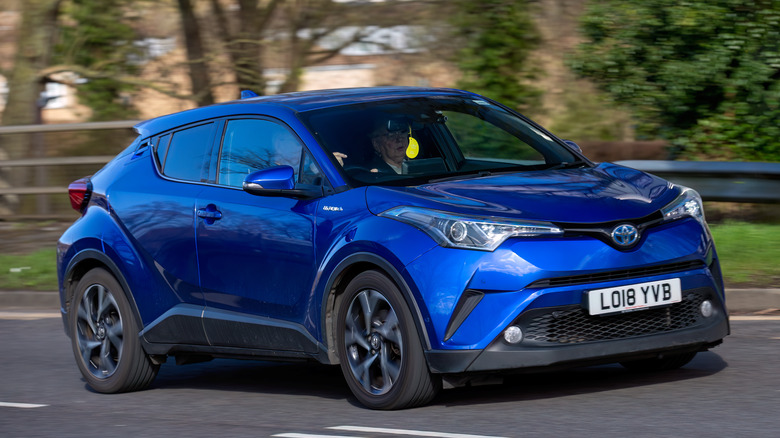
Getty Images/Getty Images
Since it started selling cars in the U.S. in 1958, Toyota has championed the need for prioritizing the satisfaction of its customers above all. The Japanese company has consistently earned a top rank among the most reliable automakers with each model it develops. It also doesn’t shy away from pushing the boundaries of innovation, as seen with the legacy of the Prius being among the first popular models that sparked interest in hybrid technology. There’s no denying such strategies of carbon neutrality have clearly paid off given the car behemoth’s recent financial success with a record-breaking ¥4.94 trillion ($31.9 billion) in net profit for the 2023 fiscal year.
Advertisement
Yet despite its size and quality of the brand, no car company is completely immune from stumbling sometimes. Even Toyota, a name that has become synonymous with affordable, dependable transportation, has experienced its fair share of mishaps along the way. Cost-cutting material features, poor quality control measures, and haphazard designs are just a few instances that have plagued some of Toyota’s models over the decades. Listed below are four examples of models with terrible reputations that Toyota probably wishes it didn’t share a history with, let alone a brand name.
The 1958 Toyopet Crown was unable to stick the landing in the U.S. market
To kick things off, we’re taking it back to the very beginning, when then-fledgling Toyota was transitioning into the automobile industry. The Toyopet Crown was the company’s centerpiece during its post-World War II campaign and would become the first Japanese car sold in the North American market. However, in hindsight, the company didn’t really place the Crown at a strong starting point, having not invested enough resources to bolster brand recognition and only opening a select few dealerships in California. Sadly, this condensed flagship that shared the same rounded, boxy design as many American classic models at the time was received with less of a bang and more of a sputter. Customers were left disappointed with the lack of power in performance as the Crown struggled to keep pace on the highways since it took 26 seconds to chug up to a barely manageable 60 mph.
Advertisement
With shoddy breaking mechanisms and engines that succumbed quickly to overheating the moment it was driven up steep inclines, the car did nothing to improve American prevalent biases against Japanese products. After such a poor performance, the Crown was swiftly discontinued and would not re-emerge in the U.S. until nearly 60 years later, this time sporting new HYBRID MAX technology and a very outlandish design. The one silver lining about this car is that its ramshackle reputation ignited Toyota’s drive to step up their performance, eventually returning stateside in the ’60s with the iconic 1965 Corona that would revolutionize the industry.
The new egg-shell design of the 1991 Previa was more of a splatter than a hit
In the ’90s, American consumers could become the proud owners of Toyota’s very own glass-encased egg on wheels, all for the paltry starting MSRP price of $19,000. Intended to electrify as an upgraded spin on the Toyota Van, the Previa did indeed deliver on the head-turning aesthetics but lacked the performance to validate it. The minivan was designed with thin walls and a restricted, mid-placed engine compartment that could only house a small 4-cylinder engine, whereas the competing models were often powered by strong V-6s. As a result, the Previa’s abysmal max horsepower of 138 was not nearly strong enough to shift a full passenger load, complete with cargo. Moreover, after a series of safety tests, the Insurance Institute for Highway Safety gave the Previa a very poor rating that tarnished its reputation as a dependable family commuter.
Advertisement
Frequent emissions test failures, a faulty starter, and spontaneous accelerations were a handful of the other common mechanical issues that plagued the Previa. To top it all off, the Previa came standard with a glitchy five-speed manual transmission that was not easy to shift, especially at high speeds. After a spotty run, Toyota finally terminated the Previa in 1998 to make room for other more competitive and reliable lines.
Promises of an affordable coupe rang hollow with the 2000 Echo
The early 00s were a time when quality automobile design went pretty much the same way as the characters in the «Final Destination» franchise. But among millennials there were three specific models that were commonly the brunt of jokes – the Pontiac Aztek, the Chrysler PT Cruiser, and the Toyota Echo. The tall and narrow exterior design of this coupe looked like it was based off the stretched out silhouette of a futuristic fedora. With such an elongated tall-boy build, the Echo was particularly difficult for drivers to maneuver when on the highway. In order to reach its goal as an affordable option for young drivers, the Toyota Echo became essentially a time capsule to the pre-gadget era of cars. From power steering and air conditioning to a decent audio system, all modern features considered standard in most cars were removed from the Echo and labeled as optional purchases.
Advertisement
Still, the base price of a new Echo without those options remained at a whopping $13,000 ($22,000 when adjusted for inflation), making it one of the more expensive models on the market with no exciting components to show for it. The Echo’s highly controversial design and minimalistic configuration did little to win over the interests of the American public, leading to consistent yearly nose-dives in profits. In the end, Toyota unceremoniously pushed this model aside in 2005 as it unveiled the lines of its new sub-brand, Scion.
Poor speed and fuel efficiency were a few of the problems that plagued the 2018 C-HR

Sue Thatcher/Getty Images
Rounding off this list is one of the more recent oddball models to come off Toyota’s assembly line. The Toyota C-HR («Coupe High-Rider») was actually meant to join Scion’s line-up until the sub-brand was officially shuttered in 2016. This overly stylized model was intended to be Toyota’s main contender in the competitive subcompact-crossover group, yet lacked the substance of a quality SUV. An inadequate 2-liter, 4-cylinder engine plus an inconsistent CVT transmission made acceleration in the C-HR a noisy, cumbersome task for the driver. With a starting price of $23,545, the model was just as expensive as competing crossovers, yet lacked the technology and fuel efficiency to justify the expense. Moreover, its design was not built to be user-friendly, with poor rearview visibility and none of the handles in the same standard position.
Advertisement
Overall, because it lacked critical elements like speed and performance, the C-HR did not live up to expectations. Customer satisfaction with the model was so low that a survey revealed only 29% of owners would purchase the model again if given the choice. Toyota struggled to make a profit from the C-HR with only 48,930 units sold in 2019 while the RAV4, the next closest option to the C-HR, sold 448,071 units in the same year. After a series of plummeting sales in the U.S. the last iteration of the Toyota C-HR was released in 2022 before it was shelved to make room for the far more successful Corolla Cross.